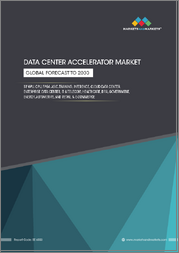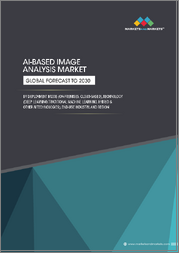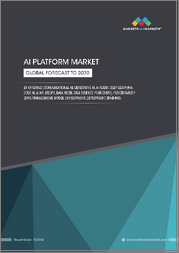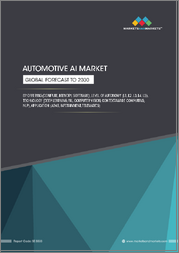
|
시장보고서
상품코드
1834113
딥러닝 칩셋 시장 : 디바이스 유형별, 전개 모드별, 최종사용자별, 용도별 - 세계 예측(2025-2032년)Deep Learning Chipset Market by Device Type, Deployment Mode, End User, Application - Global Forecast 2025-2032 |
||||||
딥러닝 칩셋 시장은 2032년까지 연평균 복합 성장률(CAGR) 16.14%로 391억 6,000만 달러에 이를 것으로 예측됩니다.
| 주요 시장 통계 | |
|---|---|
| 기준 연도 : 2024년 | 118억 2,000만 달러 |
| 추정 연도 : 2025년 | 137억 달러 |
| 예측 연도 : 2032년 | 391억 6,000만 달러 |
| CAGR(%) | 16.14% |
딥러닝에 특화된 칩셋이 산업 전반의 아키텍처, 비즈니스 모델, 경쟁 우위를 어떻게 재구축할 수 있는지에 대한 간결한 전략적 방향성을 제시합니다.
딥러닝 칩셋은 현재 기업이 컴퓨팅, 전력, 가치 창출을 생각하는 방식의 변곡점이 되고 있습니다. 범용 프로세싱에서 전문화된 가속기로의 전환으로 인해 제품 로드맵, 조달 전략, 파트너십 모델이 재편되고 있습니다. 이 소개에서는 이기종 컴퓨팅, 소프트웨어와 하드웨어의 협업 설계, 와트당 차별화된 성능으로 정의되는 환경에서 효과적으로 경쟁하기 위해 조직이 내재화해야 하는 중요한 아키텍처와 상업화 역량을 프레임워크화합니다. 프레임워크화합니다.
새로운 설계 패턴은 중앙 집중식 시설에서 대규모 훈련 처리량을 유지하면서 엣지에서의 추론 대기 시간 단축, 도메인별 가속, 메모리와 컴퓨팅의 긴밀한 통합, 패키징의 혁신을 강조합니다. 이러한 기술적 변화는 차별화된 디바이스 포트폴리오, 새로운 검증 및 컴플라이언스 체계, 소프트웨어 및 IP 라이선스, 매니지드 서비스를 통한 새로운 비즈니스 모델 등 상업적 의미로도 이어집니다. 전략적 배경을 설정한 후, 다음 섹션에서는 변화의 변화, 정책적 영향, 시장 세분화, 지역 역학, 경쟁사 행동, 그리고 리더가 엔지니어링, 제품 및 시장 출시에 대한 투자를 진화하는 고객 요구사항에 맞추기 위해 배포할 수 있는 실행 가능한 권장 사항을 살펴봅니다. 탐색합니다.
업계는 워크로드 전문화, 에너지 효율성 요구, 전체 배포에서 하드웨어와 소프트웨어의 협업 설계로 인해 급속한 구조적, 기술적 변화의 시기를 맞이하고 있습니다.
딥러닝용 칩셋의 상황은 기술적 궤적과 상업적 구조를 모두 재정의하는 일련의 변혁적 변화의 과정에 있습니다. 대화형 AI, 멀티모달 추론, 저지연 제어, 지속적 학습에 최적화된 모델로 인해 하드웨어 요구사항이 다양해지면서 설계자들은 ASIC, FPGA, 도메인 튜닝된 GPU로 향하고 있습니다. 동시에 에너지 효율에 대한 요구는 패키징 선택, 열 관리 전략, 전원 공급 장치 아키텍처에 영향을 미치며 와트당 성능을 주요 설계 지표로 삼고 있습니다.
또한, 하드웨어와 소프트웨어의 협업 설계는 희망에서 기대치로 전환되고 있습니다. 컴파일러 스택, 런타임 프레임워크, 모델 양자화 기술은 현재 실리콘과 공진화되어 지연시간과 처리량을 의미 있게 향상시킬 수 있습니다. 엣지와 클라우드의 연속체도 변화의 축입니다. 실제 도입 사례에서는 지연 시간을 최소화하고, 대역폭을 관리하고, 프라이버시 제약을 충족하기 위해 추론과 학습을 분산 아키텍처로 분할하는 경우가 늘고 있습니다. 칩렛 아키텍처 및 첨단 패키징과 같은 공급망 및 제조 혁신은 모듈식 시스템 설계의 장벽을 낮추고, 지정학적 및 규제적 역학관계는 현지 제조 및 탄력적 조달에 대한 투자를 촉진하고 있습니다. 이러한 변화가 맞물리면서 기존 기업과 신규 진출기업은 차별화된 가치를 얻기 위해 기술 로드맵, 생태계 파트너십, 시장 진출 전략을 일치시켜야 하는 환경이 조성되고 있습니다.
미국의 누적 관세 조치가 딥러닝 칩셋 이해관계자들공급망, 조달 전략, 투자 우선순위를 어떻게 재구성할 것인지에 대한 명확한 분석
관세와 수출 규제를 포함한 정책적 조치는 이미 복잡한 반도체 생태계에 새로운 차원의 복잡성을 더했습니다. 미국의 관세 조치와 관련 무역 정책의 누적 효과는 공급망, 자본 배분, 시장 진출 전략 전반에 걸친 전략적 재편을 가속화하고 있습니다. 기업들은 공급업체 기반 다변화, 조달 흐름 재구성, 관세 완화, 세제 혜택 또는 안전한 공급 협정을 제공하는 지역에서의 현지 제조 투자 가속화를 통해 대응하고 있습니다.
비즈니스 측면에서는 이러한 조치로 인해 조달 및 제품 팀이 BOM 전략을 재평가하고 영향을 받는 부품에 대한 노출을 줄이기 위해 대체 설계를 고려하게 되었습니다. 동시에 컴플라이언스 오버헤드도 증가하고 있습니다. 기업은 분류, 평가, 원산지 규정을 탐색하기 위해 통관 계획, 법률 자문, 거래 관리에 투자해야 합니다. 제품 로드맵의 경우, 관세로 인한 비용 압박은 통합 및 부가가치 서비스에 대한 집중을 촉진하고, 벤더가 소프트웨어 구독, 관리형 제공 제품, 하이퍼스케일러 및 시스템 통합사업자와의 긴밀한 파트너십을 통해 마진에 미치는 영향을 상쇄할 수 있도록 합니다. 마진에 미치는 영향을 상쇄할 수 있도록 합니다. 장기적으로 정책 주도의 조정은 팹, 패키징, R&D 투자 우선순위에 영향을 미치고, 디자인 하우스, 파운드리, 상대 브랜드 제조업체 간의 경쟁 역학을 재편할 가능성이 높습니다.
장치 유형, 배포 모드, 최종 사용자, 용도에 따라 기술 및 상업적 요구사항이 어떻게 다른지 보여주는 실용적인 세분화에 대한 통찰력 제공
부문 기반 인사이트는 설계 우선순위와 상용화 전략이 디바이스 유형, 배포 모드, 최종 사용자, 용도의 수직적 방향에 따라 어떻게 달라지는지 보여줍니다. 디바이스 유형에 따라 ASIC, CPU, FPGA, GPU 시장 역학은 크게 다르며, ASIC은 모델별 효율성이 주목받고, GPU는 범용성과 생태계 성숙도가 가장 중요하게 여겨지는 중심적인 존재로 남아있습니다. CPU는 여전히 제어, 전처리, 오케스트레이션의 역할을 담당하고 FPGA는 유연성과 지연에 민감한 가속의 절충안을 제공합니다. 이러한 디바이스 카테고리 간의 상호 작용이 플랫폼 선택과 OEM 아키텍처의 원동력이 됩니다.
목차
제1장 서문
제2장 조사 방법
제3장 주요 요약
제4장 시장 개요
제5장 시장 인사이트
제6장 미국 관세의 누적 영향 2025
제7장 AI의 누적 영향 2025
제8장 딥러닝 칩셋 시장 : 디바이스 유형별
- ASIC
- CPU
- FPGA
- GPU
제9장 딥러닝 칩셋 시장 : 전개 모드별
- 클라우드
- 엣지
- On-Premise
제10장 딥러닝 칩셋 시장 : 최종사용자별
- 소비자
- 기업
제11장 딥러닝 칩셋 시장 : 용도별
- 자율주행차
- ADAS
- 완전자율
- 소비자 일렉트로닉스
- 스마트홈 디바이스
- 스마트폰
- 웨어러블
- 데이터센터
- 클라우드
- On-Premise
- 헬스케어
- 진단 시스템
- 의료용 이미징
- 환자 모니터링
- 로봇
- 산업용 로봇
- 서비스 로봇
제12장 딥러닝 칩셋 시장 : 지역별
- 아메리카
- 북미
- 라틴아메리카
- 유럽, 중동 및 아프리카
- 유럽
- 중동
- 아프리카
- 아시아태평양
제13장 딥러닝 칩셋 시장 : 그룹별
- ASEAN
- GCC
- EU
- BRICS
- G7
- NATO
제14장 딥러닝 칩셋 시장 : 국가별
- 미국
- 캐나다
- 멕시코
- 브라질
- 영국
- 독일
- 프랑스
- 러시아
- 이탈리아
- 스페인
- 중국
- 인도
- 일본
- 호주
- 한국
제15장 경쟁 구도
- 시장 점유율 분석, 2024
- FPNV 포지셔닝 매트릭스, 2024
- 경쟁 분석
- NVIDIA Corporation
- Intel Corporation
- Advanced Micro Devices, Inc.
- Qualcomm Incorporated
- Google LLC
- Samsung Electronics Co., Ltd.
- Huawei Technologies Co., Ltd.
- MediaTek Inc.
- Graphcore Limited
- Cambricon Technologies Co., Ltd.
The Deep Learning Chipset Market is projected to grow by USD 39.16 billion at a CAGR of 16.14% by 2032.
| KEY MARKET STATISTICS | |
|---|---|
| Base Year [2024] | USD 11.82 billion |
| Estimated Year [2025] | USD 13.70 billion |
| Forecast Year [2032] | USD 39.16 billion |
| CAGR (%) | 16.14% |
A concise strategic orientation setting the stage for how specialized deep learning chipsets reshape architectures, business models, and competitive advantage across industries
Deep learning chipsets are now an inflection point in how organizations conceive compute, power, and value creation. Across industries, the move from general-purpose processing to specialized accelerators has reshaped product roadmaps, procurement strategies, and partnership models. This introduction frames the critical architecture and commercialization forces that organizations must internalize to compete effectively in an environment defined by heterogenous compute, software-hardware co-design, and differentiated performance per watt.
Emerging design patterns emphasize domain-specific acceleration, tighter integration of memory and compute, and packaging innovations that reduce latency for inference at the edge while preserving throughput for large-scale training in centralized facilities. These technical changes cascade into commercial implications: differentiated device portfolios, new validation and compliance regimes, and novel business models driven by software, IP licensing, and managed services. By setting the strategic context here, the following sections explore transformational shifts, policy impacts, market segmentation, regional dynamics, competitive behaviors, and actionable recommendations that leaders can deploy to align engineering, product, and go-to-market investments with evolving customer requirements.
The industry is undergoing rapid structural and technical transformations driven by workload specialization, energy efficiency demands, and hardware-software co design across deployments
The landscape for deep learning chipsets is undergoing a set of transformative shifts that are redefining both technical trajectories and commercial structures. Workload specialization has accelerated: models optimized for conversational AI, multimodal inference, low-latency control, and continual learning are driving diverging hardware requirements, which in turn push designers toward ASICs, FPGAs, and domain-tuned GPUs. Simultaneously, the energy efficiency imperative has elevated performance-per-watt as a primary design metric, influencing packaging choices, thermal management strategies, and power delivery architectures.
Moreover, hardware-software co-design has moved from aspiration to expectation. Compiler stacks, runtime frameworks, and model quantization techniques now co-evolve with silicon, enabling meaningful gains in latency and throughput. The edge-cloud continuum is another axis of change; real-world deployments increasingly split inference and training across distributed architectures to minimize latency, manage bandwidth, and satisfy privacy constraints. Supply chain and manufacturing innovations such as chiplet architectures and advanced packaging are lowering barriers to modular system design, while geopolitical and regulatory dynamics are prompting investments in localized manufacturing and resilient sourcing. Together, these shifts create an environment in which incumbents and new entrants must align technical roadmaps, ecosystem partnerships, and go-to-market strategies to capture differentiated value.
A clear analysis of how cumulative United States tariff measures reshape supply chains, procurement strategies, and investment priorities for deep learning chipset stakeholders
Policy actions including tariffs and export controls have layered a new dimension of complexity onto an already intricate semiconductor ecosystem. The cumulative effect of United States tariff measures and related trade policies has accelerated strategic realignment across supply chains, capital allocation, and market entry strategies. Organizations are responding by diversifying supplier bases, restructuring procurement flows, and accelerating local manufacturing investments in jurisdictions that offer tariff mitigation, tax incentives, or secure supply agreements.
Operationally, these measures have led procurement and product teams to re-evaluate bill-of-materials strategies and consider design alternatives that reduce exposure to affected components. At the same time, compliance overhead has grown: companies must invest in customs planning, legal counsel, and transactional controls to navigate classification, valuation, and origin rules. For product roadmaps, tariff-induced cost pressure encourages a focus on integration and value-added services, enabling vendors to offset margin impacts through software subscriptions, managed offerings, or closer partnerships with hyperscalers and systems integrators. Over the long term, policy-driven adjustments are likely to influence where investment flows for fabs, packaging, and R&D are prioritized, thereby reshaping competitive dynamics among design houses, foundries, and original equipment manufacturers.
Actionable segmentation insights that map how device categories, deployment models, end users, and specialized application verticals dictate distinct technical and commercial requirements
Segment-driven insight reveals how design priorities and commercialization strategies diverge across device types, deployment modes, end users, and application verticals. Based on device type, market dynamics differ meaningfully for ASICs, CPUs, FPGAs, and GPUs, with ASICs commanding attention for model-specific efficiency and GPUs remaining central where versatility and ecosystem maturity are paramount. CPUs continue to serve control, preprocessing, and orchestration roles, while FPGAs offer a compromise between flexibility and latency-sensitive acceleration. The interplay among these device categories drives platform choices and OEM architectures.
Based on deployment mode, distinct engineering and commercial trade-offs arise between Cloud, Edge, and On Premise environments. Cloud providers optimize for scale, throughput, and multi-tenant efficiency; edge deployments prioritize power-constrained inference and deterministic latency; and on premise solutions focus on security, control, and regulatory compliance. Based on end user, divergent adoption patterns emerge between Consumer and Enterprise segments, where consumer devices emphasize cost, power, and form factor, and enterprise deployments prioritize integration, lifecycle support, and total cost of ownership. Based on application, portfolios must address highly specialized requirements spanning Autonomous Vehicles with ADAS and Fully Autonomous stacks, Consumer Electronics including Smart Home Devices, Smartphones, and Wearables, Data Center workloads split between Cloud and On Premise operations, Healthcare instruments across Diagnostic Systems, Medical Imaging, and Patient Monitoring, and Robotics covering Industrial Robotics and Service Robotics. Each application imposes distinct latency, reliability, safety, and certification demands, which in turn influence silicon selection, software toolchains, and partner ecosystems. Understanding these segmentation layers is essential to tailor product differentiation, validation programs, and go-to-market narratives to the precise needs of target customers.
A regional analysis demonstrating how the Americas, Europe Middle East and Africa, and Asia Pacific uniquely shape design priorities, manufacturing choices, and commercialization strategies
Regional dynamics significantly influence strategic choices for design, manufacturing, and commercialization in the deep learning chipset ecosystem. In the Americas, strengths center on design innovation, hyperscaler demand, and a mature venture and private equity ecosystem that supports rapid prototyping, IP-based business models, and cloud-native deployment strategies. This region typically leads in large-scale training infrastructure, software frameworks, and commercial-scale services that tie chipset capabilities to enterprise offerings.
Europe, Middle East & Africa present a landscape where regulatory frameworks, automotive supply chain strengths, and energy efficiency priorities shape product requirements. Standards compliance and stringent safety certifications are central for automotive and healthcare deployments, while public policy in several countries encourages sustainability and local value creation. In contrast, Asia-Pacific stands out for its concentration of advanced manufacturing, foundry capacity, and mobile-first device ecosystems, which together drive volume production, rapid product iteration, and strong vertical integration across device OEMs and component suppliers. Government programs in the region often support semiconductor ecosystems with incentives that accelerate fabrication, packaging, and talent development. Across all regions, companies must balance local regulatory compliance, talent availability, cost dynamics, and proximity to key customers when configuring global footprints and strategic partnerships.
Insightful competitive patterns showing how chipset vendors align product strategies, IP models, and ecosystem partnerships to capture differentiated value across verticals
Competitive dynamics among companies in the chipset ecosystem reveal a mix of strategies that include platform breadth, vertical specialization, and ecosystem orchestration. Some firms emphasize end-to-end solutions that integrate silicon, software toolchains, and managed services to capture value beyond component sales. Others pursue a modular approach, licensing IP, collaborating with foundries and packaging specialists, and enabling third-party system integrators to address diverse customer needs. Strategic partnerships between chipset designers, software framework providers, and OEMs are common as organizations seek to accelerate time-to-market and jointly validate complex stacks for regulated industries.
Additionally, companies are differentiating through supply chain resilience and manufacturing partnerships, pursuing a blend of in-house capabilities and outsourced foundry relationships. Intellectual property strategies, including patent portfolios and open toolchain contributions, serve both defensive and commercial roles. Firms pursuing growth in regulated verticals such as automotive and healthcare are investing in extended validation, certification pipelines, and domain expertise to meet safety and compliance requirements. Across the competitive landscape, the ability to combine technical excellence, ecosystem orchestration, and flexible commercial models will determine which players capture the bulk of long-term value.
Practical and prioritized recommendations that leaders can implement to strengthen supply resilience, accelerate hardware software co design, and capture differentiated market opportunities
Industry leaders should adopt a set of pragmatic actions to translate strategic insight into measurable advantage. First, diversify sourcing and design options to reduce exposure to geopolitical shocks and tariff-driven cost volatility while maintaining access to advanced process nodes and packaging capabilities. Second, institutionalize hardware-software co-design by investing in internal tooling, cross-functional teams, and partnerships with compiler and runtime providers to accelerate performance tuning and deployment readiness across cloud and edge environments.
Third, prioritize energy-efficient architectures and software optimizations that align with sustainability mandates and customer total cost pressures, while also enabling new use cases at the edge. Fourth, tailor go-to-market models to match segmentation realities: emphasize productized solutions and lifecycle services for enterprise customers, and optimize cost-performance curves for consumer-facing devices. Fifth, strengthen compliance and certification pipelines for safety-critical markets, and invest in traceability, testing and documentation early in the design lifecycle. Finally, pursue focused M&A, strategic alliances, and talent development programs that close capability gaps quickly and scale commercialization. Implementing these actions will enable organizations to navigate technical complexity and policy uncertainty while capturing higher-margin opportunities created by specialized workloads.
A transparent mixed methodology describing primary interviews, technical validation, supply chain mapping, and scenario based triangulation used to derive actionable insights
This report's conclusions rest on a mixed-methodology approach that triangulates primary interviews, technical validation, supply chain analysis, and secondary research. Primary inputs included in-depth discussions with technology leaders, design engineers, procurement heads, and systems integrators to surface real-world constraints, validation requirements, and deployment trade-offs. Technical validation involved analyzing architecture whitepapers, compiler and runtime documentation, and benchmark methodologies to ensure that performance and efficiency claims align with practical design constraints.
Supply chain mapping captured supplier concentrations, fabrication dependencies, and packaging relationships, while regulatory and policy reviews assessed the implications of trade measures and standards. The analysis also incorporated patent landscapes and investment flows to identify strategic intent and capability trajectories. Throughout, findings were cross-checked using scenario planning to test sensitivity to geopolitical shifts, tariff changes, and rapid technology transitions. Limitations include typical constraints associated with proprietary roadmaps and confidential commercial terms; where possible, anonymized practitioner insights were used to mitigate these gaps and ensure robust, actionable conclusions.
A decisive conclusion articulating why technical specialization, supply resilience, and targeted commercialization will determine leadership in deep learning chipset markets
The trajectory of deep learning chipsets is defined by accelerating specialization, closer hardware-software integration, and the strategic influence of policy and regional capabilities. These forces compel organizations to refine their product architectures, validate compliance pathways, and rethink partnerships to align with varied deployment contexts. Segmentation across device types, deployment modes, end users, and application verticals reveals where performance, power, and certification constraints demand tailored solutions rather than one-size-fits-all approaches.
Regional dynamics and tariff environments further influence where to locate design and manufacturing capabilities, while competitive behaviors emphasize ecosystem orchestration and differentiated commercial models. In sum, the next phase of growth in deep learning hardware will reward organizations that combine technical depth with commercial flexibility, invest in resilient supply chains, and execute targeted validation and go-to-market strategies that reflect the unique needs of their target segments. The recommendations and insights within this report are designed to help leaders prioritize investments and operational changes to capture the opportunities inherent in this complex, rapidly evolving landscape.
Table of Contents
1. Preface
- 1.1. Objectives of the Study
- 1.2. Market Segmentation & Coverage
- 1.3. Years Considered for the Study
- 1.4. Currency & Pricing
- 1.5. Language
- 1.6. Stakeholders
2. Research Methodology
3. Executive Summary
4. Market Overview
5. Market Insights
- 5.1. Integration of chiplet-based 2.5D packaging for scalable large language model accelerators
- 5.2. Development of photonic interconnect channels in deep learning processors to minimize data transfer latency
- 5.3. Specialized integer and mixed-precision matrix engines optimized for transformer-based inference workloads
- 5.4. Emergence of RISC-V open accelerator ecosystems enabling custom AI instruction sets and extensibility
- 5.5. Advanced dynamic voltage and frequency management for workload-aware energy-efficient AI training
- 5.6. Collaborative design partnerships between hyperscalers and silicon vendors for co-optimized AI stacks
- 5.7. On-device micro AI chipsets delivering sub-millisecond real-time inference in battery-powered edge sensors
- 5.8. Neuromorphic spiking neural network processors accelerating sparse event-driven machine intelligence
- 5.9. Integration of secure cryptographic accelerators with neural network inference engines to protect model IP
- 5.10. Adoption of 3D-stacked high-bandwidth memory in AI chiplets to meet rising transformer parameter demands
6. Cumulative Impact of United States Tariffs 2025
7. Cumulative Impact of Artificial Intelligence 2025
8. Deep Learning Chipset Market, by Device Type
- 8.1. ASIC
- 8.2. CPU
- 8.3. FPGA
- 8.4. GPU
9. Deep Learning Chipset Market, by Deployment Mode
- 9.1. Cloud
- 9.2. Edge
- 9.3. On Premise
10. Deep Learning Chipset Market, by End User
- 10.1. Consumer
- 10.2. Enterprise
11. Deep Learning Chipset Market, by Application
- 11.1. Autonomous Vehicles
- 11.1.1. ADAS
- 11.1.2. Fully Autonomous
- 11.2. Consumer Electronics
- 11.2.1. Smart Home Devices
- 11.2.2. Smartphones
- 11.2.3. Wearables
- 11.3. Data Center
- 11.3.1. Cloud
- 11.3.2. On Premise
- 11.4. Healthcare
- 11.4.1. Diagnostic Systems
- 11.4.2. Medical Imaging
- 11.4.3. Patient Monitoring
- 11.5. Robotics
- 11.5.1. Industrial Robotics
- 11.5.2. Service Robotics
12. Deep Learning Chipset Market, by Region
- 12.1. Americas
- 12.1.1. North America
- 12.1.2. Latin America
- 12.2. Europe, Middle East & Africa
- 12.2.1. Europe
- 12.2.2. Middle East
- 12.2.3. Africa
- 12.3. Asia-Pacific
13. Deep Learning Chipset Market, by Group
- 13.1. ASEAN
- 13.2. GCC
- 13.3. European Union
- 13.4. BRICS
- 13.5. G7
- 13.6. NATO
14. Deep Learning Chipset Market, by Country
- 14.1. United States
- 14.2. Canada
- 14.3. Mexico
- 14.4. Brazil
- 14.5. United Kingdom
- 14.6. Germany
- 14.7. France
- 14.8. Russia
- 14.9. Italy
- 14.10. Spain
- 14.11. China
- 14.12. India
- 14.13. Japan
- 14.14. Australia
- 14.15. South Korea
15. Competitive Landscape
- 15.1. Market Share Analysis, 2024
- 15.2. FPNV Positioning Matrix, 2024
- 15.3. Competitive Analysis
- 15.3.1. NVIDIA Corporation
- 15.3.2. Intel Corporation
- 15.3.3. Advanced Micro Devices, Inc.
- 15.3.4. Qualcomm Incorporated
- 15.3.5. Google LLC
- 15.3.6. Samsung Electronics Co., Ltd.
- 15.3.7. Huawei Technologies Co., Ltd.
- 15.3.8. MediaTek Inc.
- 15.3.9. Graphcore Limited
- 15.3.10. Cambricon Technologies Co., Ltd.



















